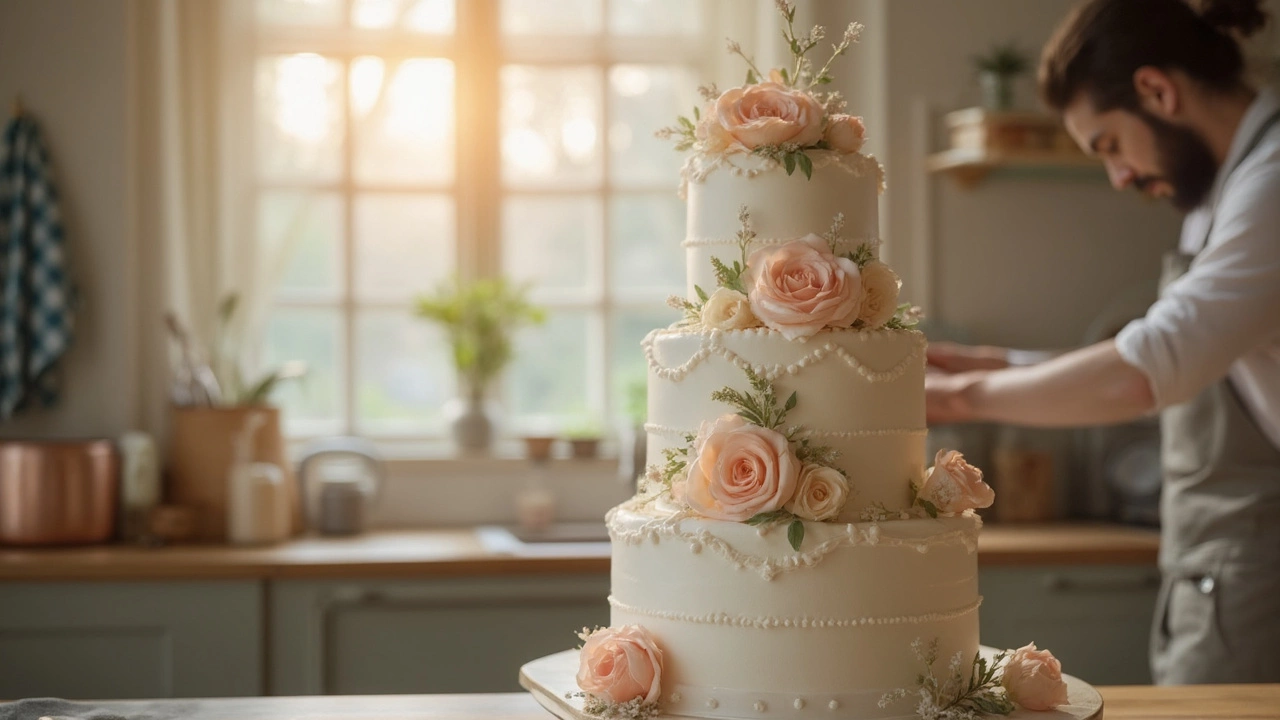Cake Stability: Simple Ways to Keep Your Wedding Cake Standing
Planning a wedding cake feels like planning the whole wedding. You want it to look amazing, taste great, and stay upright all night. The good news is that keeping a cake stable isn’t rocket science. With a few smart moves you can avoid wobbling tiers, sinking layers, and the dreaded cake collapse.
Build a Strong Base
The first thing to check is the cake stand. A solid, level stand is the foundation of any stable cake. If the stand wobbles, the whole cake will follow. Use a heavy, sturdy base—metal or thick acrylic works best. Before you place the cake, put a flat piece of cardboard or a cake board on the stand. This spreads the weight evenly and stops the bottom tier from sinking into the stand.
Next, think about the layers. A dense, well‑baked sponge holds up better than a light, airy one. If you love a fluffy texture, reinforce it with a thin layer of buttercream or ganache between each tier. This adds extra grip and stops the layers from sliding.
Support Each Tier Properly
Most bakers use dowels or food‑grade rods to hold the tiers together. Wooden or acrylic dowels work fine, but make sure they’re the right length. Insert the dowel from the bottom tier up into the next tier, leaving a little space at the top for a decorative corsage or fresh flowers. For taller cakes, add a second dowel on each side for extra stability.
If you don’t want visible dowels, try cake boards for every tier. Stack a board on the bottom tier, then place the next tier on top of that board. The board distributes weight and reduces the need for many dowels. Just be sure the board is the same diameter as the tier it supports, or a bit smaller to keep the cake looking sleek.
Another tip is to use a central pillar—especially for five‑tier cakes. A thick, sturdy rod in the middle can take most of the weight, letting the outer dowels do the fine‑tuning. Many cake shops already include a hidden column, but if you’re DIYing, ask your baker about it.
Transport is where many cakes go wrong. Keep the cake cool and level during the move. A cake box with a snug fit prevents sliding, but it also adds extra weight. If the box is too heavy, consider a lightweight cake carrier with a sturdy frame. Load the cake onto a flat surface in the car—no sloping seats. Drive slowly, avoid sudden stops, and let the cake settle for a few minutes before the ceremony.
Finally, think about the venue temperature. Warm rooms can melt buttercream quickly, making the cake slippery. If the reception hall is hot, ask the venue to keep the cake in a cooler area until the moment of cutting. A quick chill in a fridge (covered, of course) can keep the frosting firm without ruining the design.
In a nutshell, a stable cake starts with a solid base, smart tier support, careful transport, and a cool environment. Follow these easy steps and you can walk down the aisle with confidence that your cake will stay gorgeous from the first slice to the last toast.
Can I Stack a Wedding Cake the Night Before? Practical Tips and Risks
Thinking about stacking your wedding cake the night before? This article breaks down whether it's safe or risky, reveals what the pros actually do, and walks you through how to keep your cake sturdy and fresh for the big day. We talk about filling types, storage, and weather. You'll get real advice, not just theory. If you're a baker or a DIY bride, these tips can save your cake—and your nerves.
View More